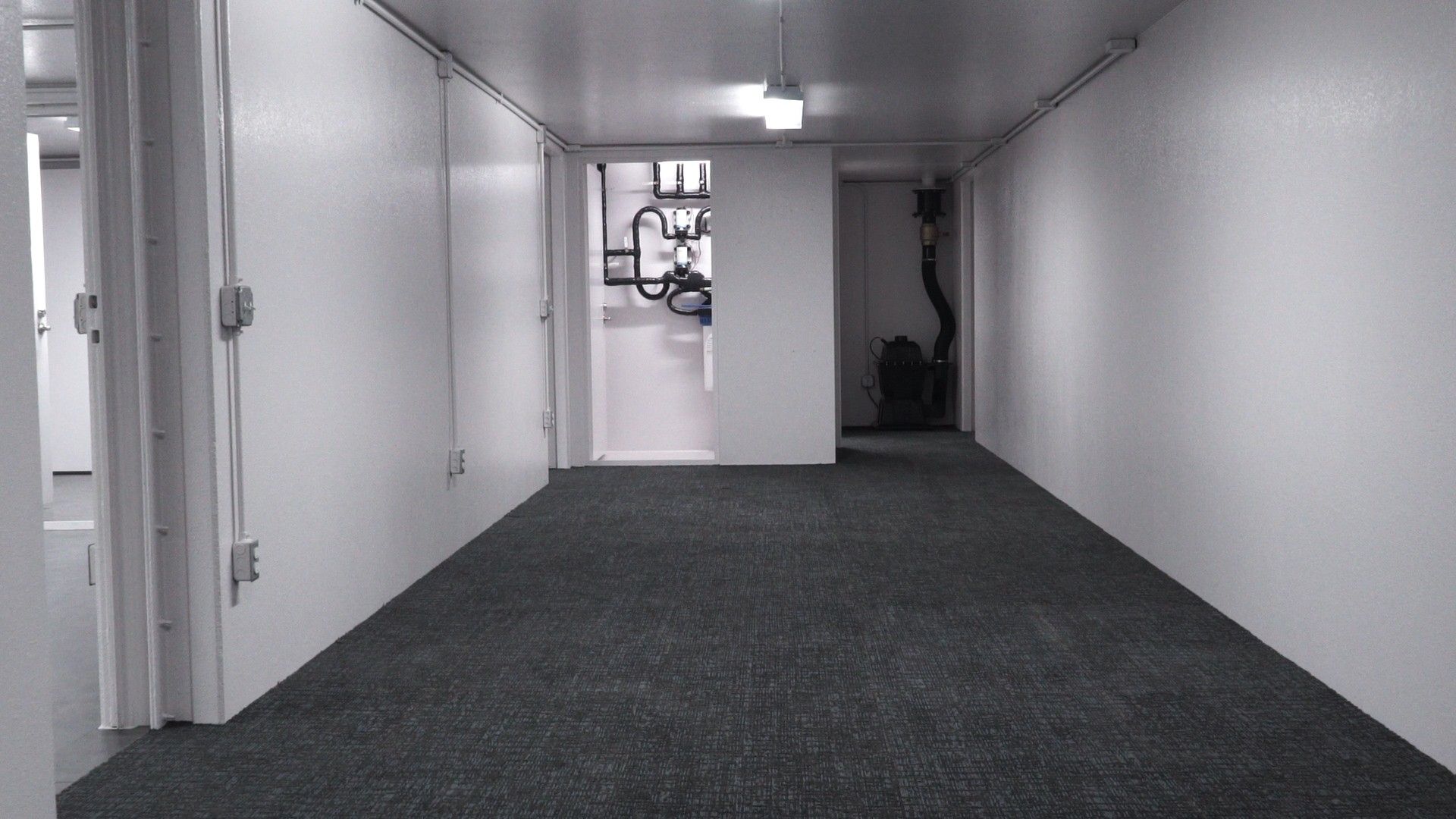What Goes Into Selecting the Best Bunker Flooring?
While most survival bunkers and bomb shelters are meant to be minimalistic, a little extra comfort goes a long way. If an emergency situation occurs and a whole family has to stay in the bunker for an extended period of time, they’ll be grateful for a cozy and home-like flooring option. This guide goes through the whole process of selecting and installing new bunker floors.
Key Factors to Consider
Survival bunkers are supposed to be functional first and foremost. It’s not a good idea to install new floors just because they match the bunker’s design. Although appearances are important, the flooring material needs to cover a wider range of characteristics.
These factors should play the biggest roles in the final decision:
- Square footage: The bunker’s square footage is the biggest determining factor of the flooring’s price. Each type of flooring material has a different rate per square foot.
- Foot traffic: Bunkers experience constant foot traffic. It’s important to choose a durable flooring material that can withstand a heavy load.
- Moisture resistance: All of the bunker’s water and drainage pipes are directly underneath the floors or behind the walls. Bunkers should also be at least 36 inches below the surface, which means they’re surrounded by underground moisture. A moisture-resistant flooring material is ideal.
- Comfortability: Bunkers need to be comfortable or else the occupants will quickly get tired of the place. Choose a flooring material that enhances the room’s livability.
- Long-term maintenance: Think about the flooring material’s long-term sustainability. Low-maintenance materials will be easier to manage and give the bunker fewer problems down the road.
It’s also important to consider the flooring installation process. Since the project will take place in an unconventional setting, some unconventional steps are required.
Bunker Flooring Installation Steps
Since this project is smaller than most other floor installations, it should only take about a week to complete the necessary steps. These are the most important steps to installing new floors in an underground bunker.
1. Reinforce the Foundation
Underground floor installations often require the builders to reinforce the surrounding foundation. Survival bunkers should have two main layers beneath the flooring — a concrete foundation and a waterproof coating to prevent leaks. Shelters also need metal beams to prevent cave-ins and walls up to three feet thick to protect against radiation.
If the bunker is located in an earthquake-prone area, it might even be necessary to install foundational features that redistribute seismic waves such as cross braces and moment-resisting frames.
2. Verify the New Floor’s Height
Before doing anything else, the new floor’s height must be verified. The height must align with the bunker’s door frame to ensure smooth opening and closing. Doing careful measurements will also ensure that the floor is completely level, with no slopes or divots. However, perfect measurements are impossible.
It’s always better to err on the lower side. If the floors are a little too low, the installers can always add a threshold to fill up the empty space under the door. But if the floors are too high, the entire door frame needs to be adjusted.
3. Add the Subfloor and Underlayment
Once the height gets verified, it’s time to add the subfloor and underlayment. These additional layers provide a flat and structurally sound surface for the main floor layer. Subfloors are typically made of plywood because of the material’s strength and elasticity. The underlayment goes above the subfloor and directly beneath the main floor layer.
4. Establish a Consistent Temperature
Every type of flooring material has specific temperature conditions that help them settle into their new environment. It’s important to maintain these conditions during the main floor layer’s installation to prevent warping. The installers might even ask to keep the temperature the same throughout the entire project.
5. Add the Main Floor Layer
Now it’s time to add the main floor layer. The installers have to establish a cutting area so they can cut specific tile shapes to fit the bunker’s design. The cutting area should be a hard surface with adequate lighting and access to an electrical outlet. This step is usually the fastest part of the project.
Best Flooring Materials for Bunkers
Bunker owners will be hard-pressed to find a flooring option that checks all of the boxes, but a handful of materials come close to perfection. Let’s go through the best flooring options for underground survival bunkers and bomb shelters.
1. Hardwood
Hardwood is a popular flooring option for bunkers and other survival-focused buildings, such as remote cabins and off-the-grid homes. It can handle decades of constant foot traffic, which makes it ideal for small contained areas. It’s also the most eco-friendly option, consisting of 100% natural ingredients.
The main downside of hardwood floors is their susceptibility to water damage. However, staining the floors instead of painting them will give them more moisture resistance. A stain finish seeps deeper into the wood, which seals up vulnerable areas and increases the floor’s lifespan in the process.
2. Carpeting
Wool or nylon carpets can give otherwise gloomy survival bunkers a cozy atmosphere. Moisture isn’t a problem because dehumidifiers, fans and other simple tools can help to remove water from the fabric. Carpeting handles heavy traffic well, but its lifespan is typically just eight to ten years because of the soft build.
Carpets also attract dust, dirt and other allergens. Air quality could become an issue later down the road. That’s why it’s crucial for all survival bunkers to have ultra-low penetration air filters. ULPA filters remove 99.999% of airborne particles and keep the bunker’s limited air supply clean.
3. Ceramic
Ceramic flooring is a simple combination of stone, clay and water. These ingredients are naturally resistant to heat and moisture, which makes ceramic flooring a fantastic choice for underground bunkers. It can even be molded into different shapes to fit the bunker’s interior design. Glazed ceramic has a rough texture, while unglazed is smooth and reflective.
However, ceramic tiles often show signs of scratching, cracking and chipping if the foot traffic gets too rough. Families with young children and pets might want to pursue another option. It’s impossible to repair these types of damage with everyone trapped inside a bunker. The only solution is to replace the broken tiles with new ones.
4. Concrete
Concrete is the main flooring material for most underground rooms because of its ability to control temperatures. Concrete has a high thermal mass, which allows it to absorb and slowly release heat into the surrounding environment. Bunkers with concrete floors will have no issue staying cool and comfortable.
Concrete floors are also highly customizable, with an endless variety of colors, patterns and textures. Installation can be tricky, though. It’s crucial to completely seal and polish the concrete during installation to prevent it from absorbing moisture. If concrete gets too much moisture, it will start to crack.
5. Vinyl
Vinyl plank flooring is an alternative to hardwood floors. It consists of polyvinyl chloride sheets, multiple protective layers and an outer shell that resembles hardwood. Easy customization is the best feature of vinyl flooring. Custom floors will create a home-like atmosphere inside the bunker and make the place more hospitable.
Vinyl’s multi-layered design also makes it highly resistant to all kinds of damage. It also provides more comfortable underfoot cushioning, which is ideal for high-traffic areas. The only two long-term maintenance requirements are vacuuming and cleaning. Completing these simple tasks will allow vinyl floors to last for decades without issue.
Find Your Ideal Bunker Flooring
Installing new floors is one of the biggest steps of building an underground bunker. Many factors can influence the choice of material, but the most important thing is longevity. Consider the required installation steps and the different types of flooring materials, then make an informed decision. There’s no such thing as being too careful when it comes to building a survival shelter.


